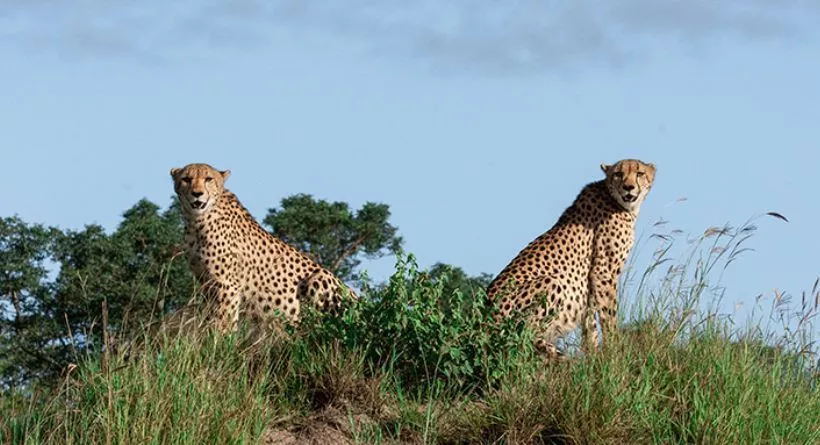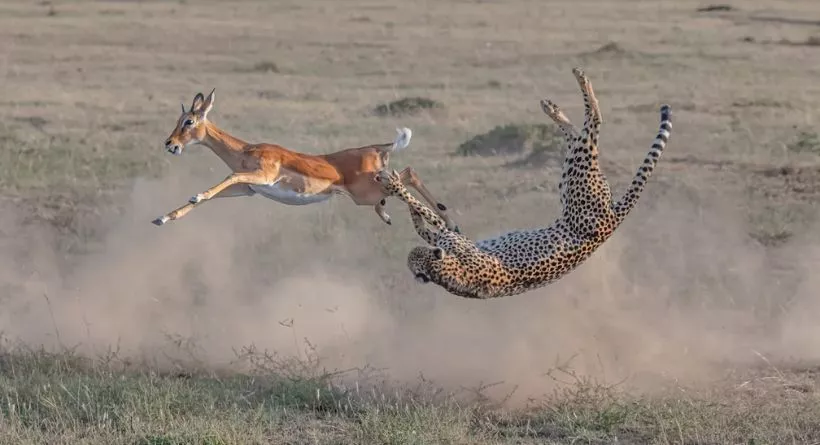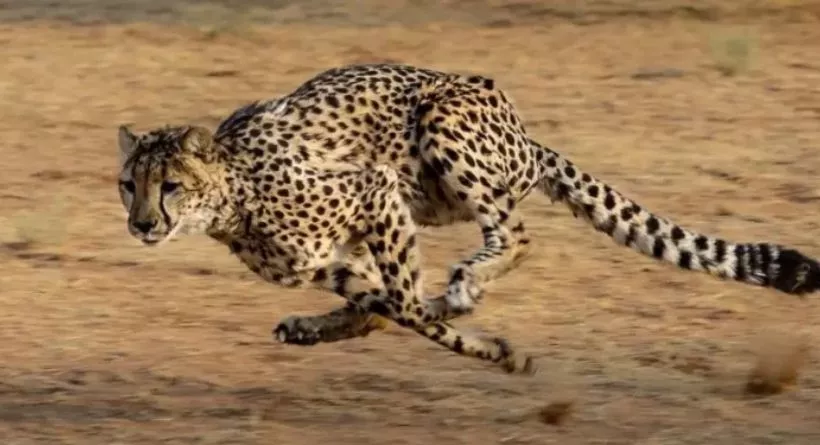Are you feeling perplexed and perturbed about the escalating challenges facing the “Cheetah – Magnificent but Fragile”? You’re not alone. The concern for cheetahs’ survival is something that keeps many of us, especially wildlife experts and environmentalists, awake at night. These beautiful creatures, once gloriously free and thriving, are now caught in a grim battle for survival. We see the problem, we acknowledge it, and most importantly, we share your concern.
Through this blog post, we promise to offer an illuminating solution. We’ll delve into the intricacies of the issues at hand, distilling the essence of expert advice, research, and conservation strategies. The plight of the “Cheetah – Magnificent but Fragile” is no small matter. By understanding the full extent of their struggle, we can together make a difference.
Right at this moment, we invite you to pause and consider the startling image of a world without these stunning sprinters. That emotional tug you feel, that’s the urgency we need to harness. Let’s stand together, fully committed to change the narrative for the “Cheetah – Magnificent but Fragile”. This is a concern we all share, a problem we all need to solve.
The Alluring World of Cheetahs

An Introduction to Cheetahs
Let’s embark on a journey into the captivating world of cheetahs. Found predominantly in Africa, these majestic creatures are a sight to behold. Their elegant physique, graceful movements, and captivating speed make them one of nature’s most exquisite creations. In the heart of the wild, they embody both beauty and power, earning their rightful place as one of the planet’s most fascinating predators.
Cheetahs: The Fastest Land Animals
The cheetah, undeniably, is an embodiment of speed and agility. Imagine a race car, speeding along a track. Now envision a creature, outpacing that car with effortless ease. That’s a cheetah for you – the fastest land animal, capable of reaching speeds up to 60-70 miles per hour. Their speed isn’t their only remarkable trait, though. They are agile creatures, capable of changing directions swiftly while maintaining their breakneck speed.
Unique Features that Make Cheetahs Magnificent
These magnificent beings are not just about speed. Look closer, and you’ll find an array of unique features that make cheetahs truly exceptional. They have a lean body and a flexible spine, which allows for great agility during high-speed chases. Their large nostrils provide increased oxygen intake, and their special adrenal glands boost their ability to sprint. Even their distinct tear marks serve a purpose, reducing sun glare and aiding focused vision. Cheetahs are indeed an example of nature’s master craftsmanship.
Cheetahs’ Struggle for Survival

The Alarming Decline in Cheetah Population
Our journey into the world of the “Cheetah – Magnificent but Fragile” takes a somber turn as we confront a grave reality. Cheetah populations are rapidly declining. Studies indicate that over the last century, we’ve lost 90% of the cheetah population worldwide. From around 100,000 in the early 1900s, we’re down to just about 7,000 today. These figures are not just numbers on a screen, but a desperate cry for help from an iconic species struggling for survival.
Threats to the “Cheetah – Magnificent but Fragile”: Habitat Loss, Poaching, and Climate Change
So, what’s causing this dire situation? First, habitat loss has had a massive impact on the cheetah population. Expanding human activities like farming and infrastructure development encroach upon their habitats. Secondly, poaching poses a considerable threat. Despite legal protections, cheetahs are hunted for their distinctive coats. Finally, climate change throws a wrench into the delicate balance of their ecosystems, causing a ripple effect on prey availability and habitat suitability.
Expert Opinions on the Concerns for Cheetahs
Experts have voiced their concerns for the “Cheetah – Magnificent but Fragile”. They stress that the species’ survival hangs in the balance. It’s not a lost cause, though. These same experts believe that with concerted efforts and robust conservation strategies, we can alter the current trajectory. As we continue our exploration in the following sections, we will dive deeper into these strategies, empowering you to be a part of this crucial mission.
Conservation Efforts for the “Cheetah – Magnificent but Fragile”
International Initiatives for Cheetah Conservation
Hope isn’t lost for our “Cheetah – Magnificent but Fragile”. A multitude of international initiatives have sprung up over the years. Organizations like the Cheetah Conservation Fund (CCF) and International Union for Conservation of Nature (IUCN) are working tirelessly to protect these stunning creatures. Their efforts range from habitat restoration to implementing stringent anti-poaching measures.
Case Studies: Successful Conservation Strategies
To further instill optimism, let’s look at some successful conservation strategies. Namibia, often termed the “Cheetah Capital of the World”, offers a prime example. By promoting a coexistence model, where farmers are encouraged to use non-lethal methods to protect livestock, cheetah populations have shown promising signs of recovery. Here, Cheetahs are not seen as enemies, but as an integral part of the ecosystem.
The Role of Technology in Cheetah Conservation
Technology has also emerged as a powerful ally in conservation. Satellite tracking collars provide invaluable data on cheetah movements, helping us understand their habits and needs. Furthermore, advanced genetic analysis tools help in maintaining a healthy genetic diversity in the population. The intersection of technology and conservation holds the key to ensuring a brighter future for our “Cheetah – Magnificent but Fragile”.
How You Can Help
Volunteering and Donations
Turning our concerns for cheetahs into action starts with you. Volunteering with conservation organizations is a proactive step you can take. Or perhaps, consider making a donation. Your contributions, no matter how small, can help fund crucial conservation projects.
Education and Awareness: Spreading the Message about the “Cheetah – Magnificent but Fragile”
Raising awareness is another potent tool in our arsenal. Talk about the plight of the cheetahs. Share articles like this one, or create a social media post highlighting their plight. The more we talk about our “Cheetah – Magnificent but Fragile”, the more people we can inspire to act.
Adopting Sustainable Practices
Lastly, let’s talk about sustainable practices. Adopt a lifestyle that respects and protects our environment. Simple actions like reducing plastic waste, supporting ethical products, and practicing responsible tourism can make a world of difference. Remember, every action counts when it comes to conserving our “Cheetah – Magnificent but Fragile”.
Conclusion
The Need for Urgent Action
Throughout this journey, we’ve explored the captivating world of the “Cheetah – Magnificent but Fragile”. We’ve delved into their breathtaking speed, the unique traits that make them magnificent, and also the sobering reality of their struggle for survival. The rapid decline in their population due to habitat loss, poaching, and climate change underscores the urgent need for concerted action.
The Hope for the “Cheetah – Magnificent but Fragile”
Yet, amid the looming concerns for cheetahs, hope flickers in the form of numerous conservation efforts. International initiatives, successful strategies like coexistence models, and the potential of technology in conservation offer rays of hope. It’s heartening to witness such a collective endeavour to secure the future of our “Cheetah – Magnificent but Fragile”.
Final Thoughts on the Concerns of Experts for Cheetahs
The journey doesn’t end here. As we conclude, remember that every one of us has a role to play. By volunteering, spreading awareness, or adopting sustainable practices, you can contribute to this global effort. Let’s shoulder the concerns of experts for cheetahs, and work together to ensure that the story of the “Cheetah – Magnificent but Fragile” continues to inspire generations to come.

